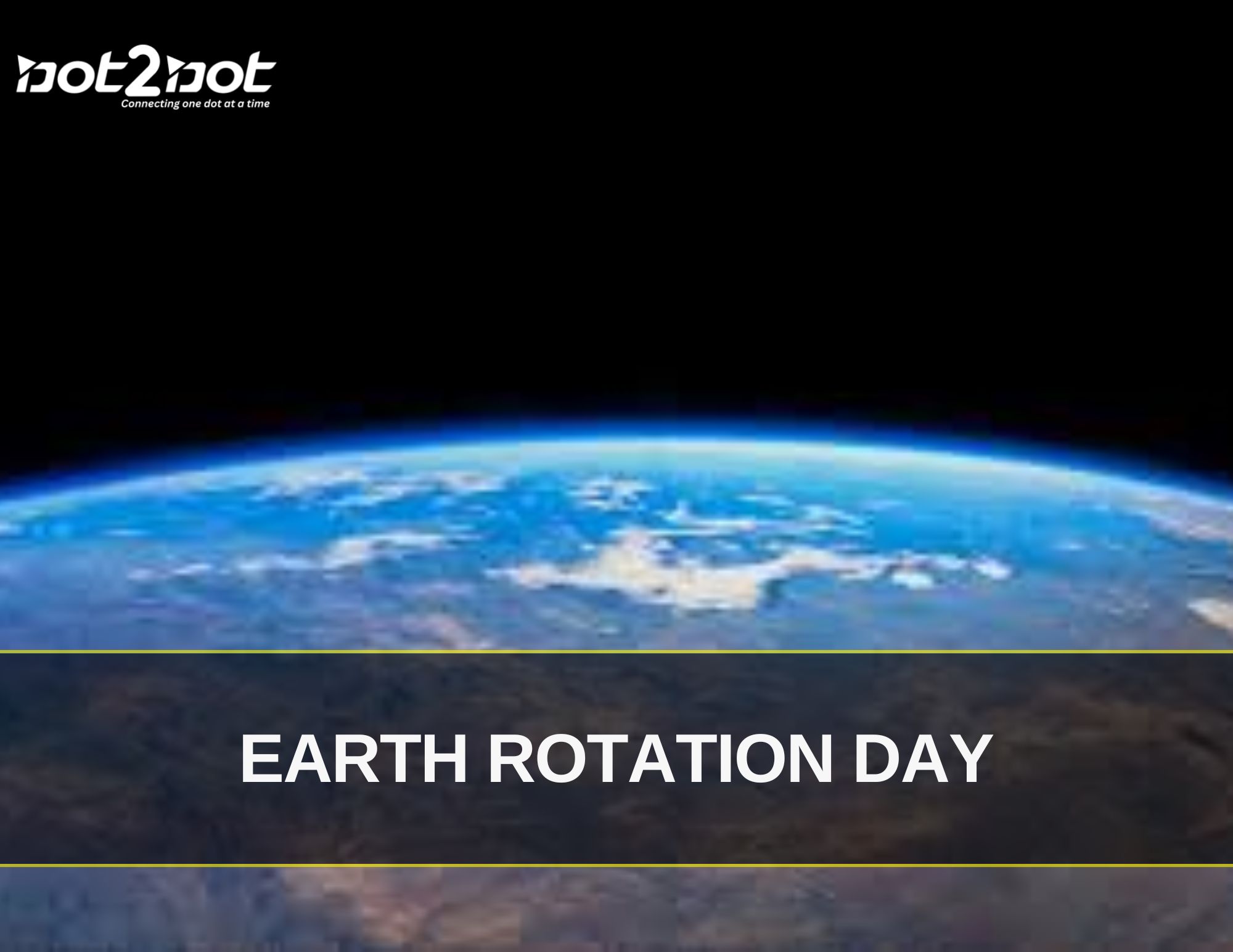Most everyone knows from science class in school that the earth rotates on its axis and one full rotation takes 24 hours to complete. It would be very surprising if there was someone who didn’t already know this! But what some people may not know is that the speed of the earth’s rotation changes slightly from day to day and year to year.
So a true solar day is not exactly 24 hours, but the variations are a matter of seconds. A mean solar day is based on the yearlong average, but the basic concept of a solar day itself is the length of time for the earth to complete one full rotation on its axis.
And that’s one of the reasons that Earth’s Rotation Day is celebrated!
History of Earth’s Rotation Day
At the World’s Fair in 1851, the French physicist Léon Foucault (pronounced ‘foo koh’) demonstrated how the earth rotates by suspending a lead-filled brass ball from the top of the Panthéon in Paris. This device, now known as the Foucault Pendulum, showed that the plane of the swing of the pendulum would rotate relative to the Earth’s own rotation.
When a Foucault Pendulum starts swinging in one direction, after a few hours the direction will change. Although it seems like the floor is the stable part of the contraption and the change is the way the pendulum is swinging, in reality, the change is the fact that the earth beneath the feet is slowly rotating while the pendulum stays the same.
Many installations of the Foucault Pendulum also include a series of pegs that are arranged around the center, indicating the passage of time. If one was located on the north pole or south pole, then it would take almost exactly 24 hours for the series to be finished, but the amount of time changes slightly as the installations are moved around the globe.
Foucault Pendulums can now be found in science museums across the world and they are an important tool for understanding and learning about solar science. While Isaac Newton discovered gravity, he did not actually explain the cause behind it, merely that it exists as a force and so this scientific knowledge was expanded through Foucault.
Earth’s Rotation Day honors Foucault’s first public demonstration in Paris and this day seems to have been historically celebrated on the anniversary of that occasion. That being said, it is a little less clear on who first marked the occasion of Earth’s Rotation Day or when they decided to do it. It probably didn’t happen in Foucault’s lifetime, but no one can be completely certain either way.
How to Celebrate Earth’s Rotation Day
Sure, it’s true that the earth rotates every day. But not every day is Earth’s Rotation Day, so it is important to celebrate this annual event! Try out these ideas:
Visit a Space and Science Museum
For those who would like to see a version of Foucault’s Pendulum in real life, try visiting the nearest space and sciscience museum, as many of them have one. They’re actually quite interesting to look at in action and much can be learned from the experience. Another great reason to visit a local space and science museum is to try to learn more about the earth’s rotation!
Certainly, the ideal place to go might be to view the life-sized replica of the original Foucault’s Pendulum on display at the Pantheon in Paris. But if that’s a bit too far to travel, here are just a few space and science museums that offer an opportunity to get started with viewing a Foucault Pendulum:
- Houston Museum of Natural Science
Part of the permanent exhibit at this museum located in Texas is the Herzstein Foucault Pendulum. Visitors can get up close and personal with this installation that demonstrates the activity and movement of the earth as Foucault originally discovered and displayed. - Science Center of Iowa in Des Moines
One of the most beloved features at this science center has been hanging in this city for more than 45 years. - California Academy of Sciences in San Francisco
Hanging in the East Pavilion of the Academy is a replica of Foucault’s original installation from Paris in 1851. Although the original one hung from a 219 foot wire, this one is a smaller version, hanging from a 30 foot cable. - United Nations Headquarters in New York City
This installation in the main lobby of the UN Assembly contains a 200 pound gold plated sphere that is suspended 75 feet above the floor. It was presented as a gift to the United Nations from the Netherlands government in 1955, just over 100 years following Foucault’s original display in Paris.
Throw an Earth’s Rotation Day Party
Join in on the celebration with a variety of sciency friends, family members and coworkers by hosting a party in honor of Earth’s Rotation Day! Have guests dress up as their favorite scientist, such as Leo Foucault or Isaac Newton.
Decorate the party room with planet earth themed balloons in blue and green. Entertain guests by playing party games, like dividing up into teams and holding a competitive quiz to see who can best answer questions related to science, space and the earth’s rotation. Other entertainment might be to watch a video or documentary to learn all about Foucault’s Pendulum and his discovery of the way the earth rotates on an axis.
Of course, no party would be complete without access to snacks, so be sure to create some treats that revolve around the theme of the earth in space. Bake round cookies and ice them with blue and green frosting to resemble the earth. Serve popcorn that is dyed blue and green to represent the blue and green colors of the plant. Or make cake pops that are decorated to look like the earth.


